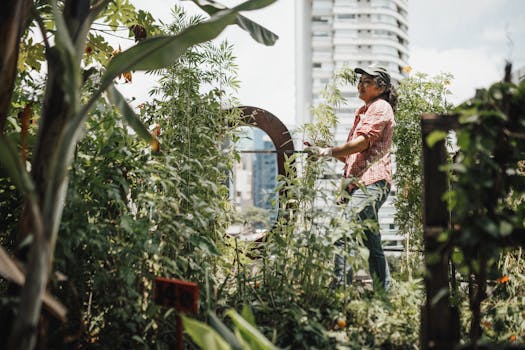
Urban Green Spaces: The Future of Outdoor Living in European Cities by 2025
Urban Green Spaces are the future of outdoor living in European cities. As the world becomes increasingly urbanized, cities are looking for ways to provide their citizens with high-quality outdoor spaces that promote sustainability, improve air quality, and enhance the overall quality of life. By 2025, European cities will have undergone a significant transformation, with urban green spaces playing a vital role in shaping the urban landscape.
Introduction to Urban Green Spaces
Urban green spaces refer to any area of vegetation in an urban environment, including parks, gardens, green roofs, and green walls. These spaces provide a range of benefits, including improving air quality, reducing urban heat island effects, and promoting biodiversity. They also offer opportunities for recreation, socialization, and relaxation, making them an essential component of urban planning.
The Benefits of Urban Green Spaces
The benefits of urban green spaces are numerous and well-documented. Some of the most significant advantages include:
- Improved air quality: Urban green spaces help to remove pollutants from the air, improving the overall air quality and contributing to a healthier environment.
- Reduced urban heat island effects: Green spaces can help to mitigate the urban heat island effect, which occurs when built-up areas absorb and retain heat, making cities warmer than surrounding rural areas.
- Promoting biodiversity: Urban green spaces provide habitats for a range of plant and animal species, helping to promote biodiversity and support local ecosystems.
- Recreation and socialization: Green spaces offer opportunities for recreation, socialization, and relaxation, making them an essential component of urban planning.
- Economic benefits: Urban green spaces can also have economic benefits, including increasing property values, attracting businesses and tourism, and creating jobs.
European Cities Leading the Way
Several European cities are leading the way in terms of urban green space development. Some examples include:
- Copenhagen, Denmark: Copenhagen has set a goal of becoming carbon neutral by 2025 and is investing heavily in green infrastructure, including green roofs, green walls, and urban parks.
- Stockholm, Sweden: Stockholm has implemented a range of green space initiatives, including the creation of a green roof on the city’s central station and the development of a network of urban parks and gardens.
- Barcelona, Spain: Barcelona has launched a series of green space initiatives, including the creation of a green wall on the city’s main boulevard and the development of a network of urban parks and gardens.
Challenges and Opportunities
While urban green spaces offer a range of benefits, there are also challenges and opportunities to consider. Some of the most significant include:
- Space constraints: One of the biggest challenges facing urban green space development is space constraints. Cities are often densely populated, making it difficult to find space for green spaces.
- Funding: Developing and maintaining urban green spaces can be expensive, requiring significant investment from cities and other stakeholders.
- Community engagement: Urban green spaces are most effective when they are designed and managed in collaboration with local communities. This requires significant community engagement and participation.
Conclusion
Urban green spaces are the future of outdoor living in European cities. By 2025, cities will have undergone a significant transformation, with green spaces playing a vital role in shaping the urban landscape. While there are challenges to consider, the benefits of urban green spaces make them an essential component of urban planning. As cities continue to evolve and grow, it is essential that we prioritize the development of high-quality urban green spaces that promote sustainability, improve air quality, and enhance the overall quality of life for citizens.






